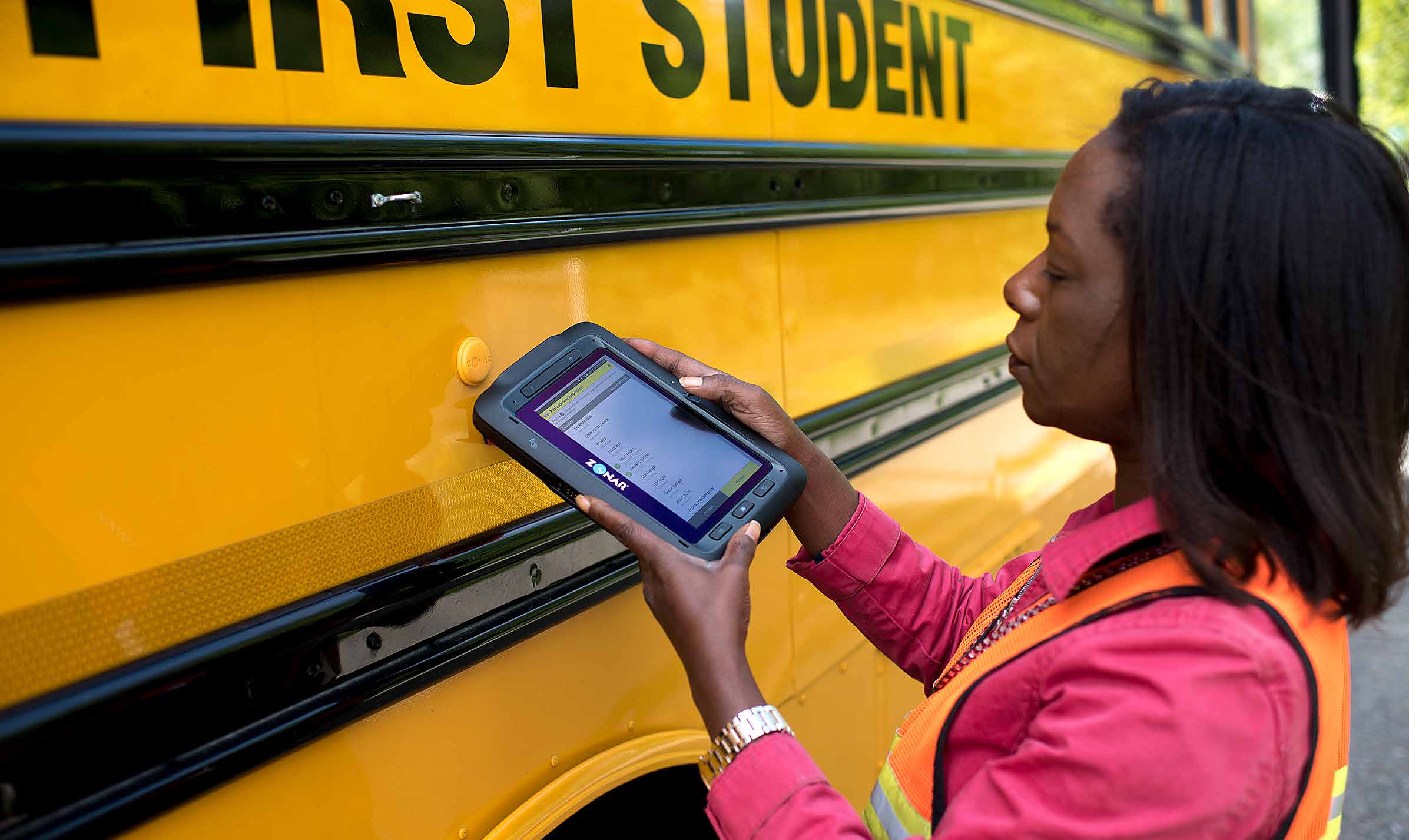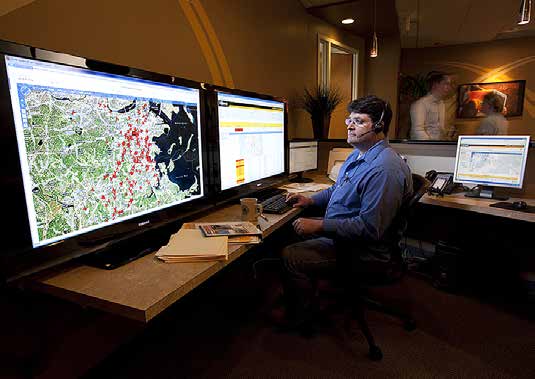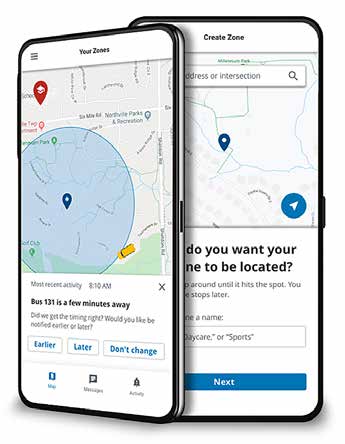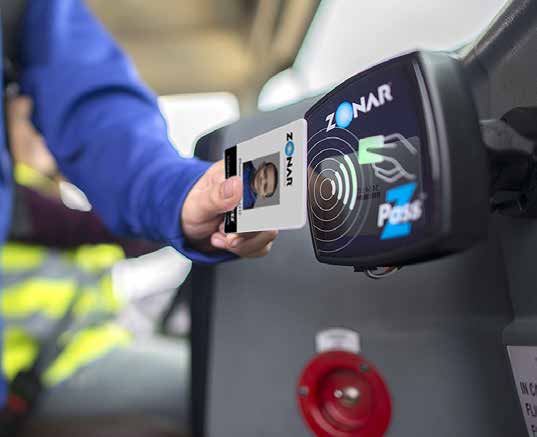
The scope of students being transported to school is evolving every day in the wake of COVID-19. As schools slowly return to holding in-person classes under new guidelines, the act of going to school will be far from what was previously considered “normal.”
 In a post-COVID world, buses are not operating every day. Some routes run on reduced frequencies, and some routes have been altered entirely. Per-vehicle ridership has been reduced to maintain physical distancing, and in many districts the driver shortage has become even more exacerbated than pre-pandemic.
In a post-COVID world, buses are not operating every day. Some routes run on reduced frequencies, and some routes have been altered entirely. Per-vehicle ridership has been reduced to maintain physical distancing, and in many districts the driver shortage has become even more exacerbated than pre-pandemic.
With each successive challenge, transportation providers move away from the old normal. With drivers being asked to do more than ever in terms of tracking students and sanitizing, there is a greater likelihood that we will see an increase in safety incidents on the road. The pandemic has increased the likelihood for distraction in passenger cars, with drivers worrying about masks and sanitizer, as well as increased the level of overall impatience with a higher stress level resulting from day-to-day traveling during COVID.
Schools must focus on re-building their culture of safety with COVID in mind. This means creating comprehensive plans which include driver training on new protocols, reinforcing student onboarding and offboarding safety, a solid bus maintenance plan, and now a sanitization plan.
The new normal
 Responding to the new post-COVID normalcy requires the ability to track students and potentially implement contact-tracing in the event of a confirmed infection.
Responding to the new post-COVID normalcy requires the ability to track students and potentially implement contact-tracing in the event of a confirmed infection.
The standard for school bus cleanliness has increased dramatically. Like any safety task, it must be carefully documented. Using a combination of best practices and technology is the strongest approach to defining your culture of safety.
“In simple terms: if it’s not documented, it didn’t happen,” said H. Kevin Mest, senior vice president of passenger services at Zonar Systems. “The same goes for pre- and post-trip inspections. When a driver completes their checklist, did they ensure the bus was truly clean – or did they just fill out a form?”
“Furthermore, what happens when a student with COVID boards the bus?” Mest added. “The first question is always, ‘With whom did they come into contact?’ Without the proper tools and technology for student tracking, schools will have a hard time answering that question.”
Tools for success
In a broad sense, driver training is still the most important tool for pupil transportation providers. Operating a bus is a complex task, Mest acknowledged, but it becomes much more complicated when coupled with safely managing dozens of socially distanced children in often-challenging driving conditions.
 “There must be a heightened emphasis on driver training, specifically on student management — which has always been a key issue for school bus safety.”
“There must be a heightened emphasis on driver training, specifically on student management — which has always been a key issue for school bus safety.”
Communication is another pivotal tool for navigating pandemic-era challenges. As transportation fluctuates between partial, hybrid, and full-service, that information must be communicated clearly and quickly to drivers, dispatchers, administration, and parents. Schools should develop comprehensive transportation communication plans, beyond the scope of what has thus far been considered adequate.
Technology
With a focus on stewardship of children, Mest detailed a few key technology areas for pupil transportation for Zonar.
Student tracking — Student tracking solutions like Zonar Z Pass™ track students as they use their student ID to board and exit the vehicle, allowing for date and timestamp recording. The enhanced version of that student-tracking solution, Zonar Verify™, allows for drivers to use an onboard tablet to view student information including name, bus route and soon photo ID, to visually and verbally confirm that each student is entering the correct bus and exiting at the correct stop.
“With all the changes that are happening in school routing delivery systems this year, verification is really important,” Mest said. “It’s essential for students, and especially younger kids, to know that they’re traveling on the right route and getting on and off the bus at the right stop. It’s an additional stewardship safety net for students.”
Driver inspections – Mest also emphasized the heightened importance for districts and other school transportation providers to authenticate pre- and post-trip vehicle inspections by drivers. An electronic verified inspection report (EVIR®) ensures that drivers are not pencil-whipping reports or rushing through inspections. The patented system, available only from Zonar, places NFC tags in inspection zones throughout the school bus. Each tag is digitally linked to the vehicle on which it is placed, and its inspection data — including sanitization procedures — is pre-loaded into the system.
“Not only does it provide verification that the driver completed their inspection, but it provides documentation for any defects, then automatically creates work orders for maintenance to correct those defects,” Mest explained. By adding a geofence around a yard, you can also ensure that you are immediately notified if a bus starts to leave a terminal without having completed their inspection.
EVIR’s Student Check also requires that drivers walk the length of the bus to ensure no students are left onboard during a post-trip inspection.
Communication tools — Administrations should use parent-facing solutions and apps like Zonar’s MyView™ to redefine how they communicate with parents, Mest suggested.
“When buses are running, parents can use the app to track their kids in real-time,” he said. “But even when buses aren’t running, administrators should use the app to quickly and effectively push out transportation information to parents of eligible riders. MyView is also route agnostic making it Uber-like in both functionality and ease of use.”
Zonar also partners and integrates with stop-arm camera safety provider BusPatrol, which Mest said he believes will be a major deterrent against the over 17 million nationwide stop-arm violations that occur every year.
If a driver ignores a stop-arm from a vehicle equipped with BusPatrol, the system automatically documents the violation and captures the offender’s license plate. BusPatrol is authorized to issue a ticket which is transmitted to local authorities.
“Our industry knows far too well how stop-arm violations can result in serious injuries or even fatalities,” he said. “With more schools implementing this kind of technology, we expect to see a much lower incidence of those tragic events. The only acceptable number is zero.”
Mest added that school systems are no stranger to unfunded mandates, or underfunding in general, so creative thinking is often required in to work outside budget constraints. Grants such as the Zonar and NAPT sponsored Don Carnahan Memorial Grant can provide up to $50,000 in safety and efficiency technology hardware to NAPT member schools. In partnership with Bus Patrol, there are also revenue sharing opportunities.
The industry is stepping up
States and communities are beginning to mandate legislation to enforce technology and best practices. According to Mest, Zonar supports these initiatives.
He cited California’s Paul Lee School Bus Safety Law, mandating that drivers manually check the bus for any remaining students and press a red button in the vehicle’s rear to ensure that all students have exited. He also noted that New York City was one of the first cities to enact laws requiring basic GPS, after students were stranded on the bus in a massive snowstorm.
Zonar also supports the Zip. Zero. Nada. None. campaign spearheaded by NAPT® and the National Association of State Directors of Pupil Transportation Services (NASDPTS) which commits to eliminate school transportation-related fatalities by June 30, 2025. There are nearly 15 school transportation-related fatalities each school year, even though — according to the National Highway Traffic Safety Administration (NHTSA) — a school bus is the safest way for students to get to and from school, about 70 times safer than walking, riding a bike or in a car.
“While third party vehicles are responsible for most of the incidents involving a school bus, there are steps we can take to reduce incidents and worse outcomes,” Mest said. “This includes training drivers, utilizing stop-arm technology like BusPatrol, and working with students on their behavior to lower distractions.”
Additionally, Mest said, running PSAs around the dangerous changes during the school year — such as daylight savings time, winter driving and back-to-school traffic — will create awareness and help lower the frequency of fatalities. Other technologies, like onsite cameras in combination with legislation and ticketing systems, will also help remind drivers to be more attentive of their surroundings and change their driving behaviors.
“The biggest driver of these fatalities is passenger car drivers not obeying stop arms on the bus, which poses a huge problem for children around the bus,” he said. “A combination of technology, best practices, and legislation is needed to change behaviors faster and systemically.”


